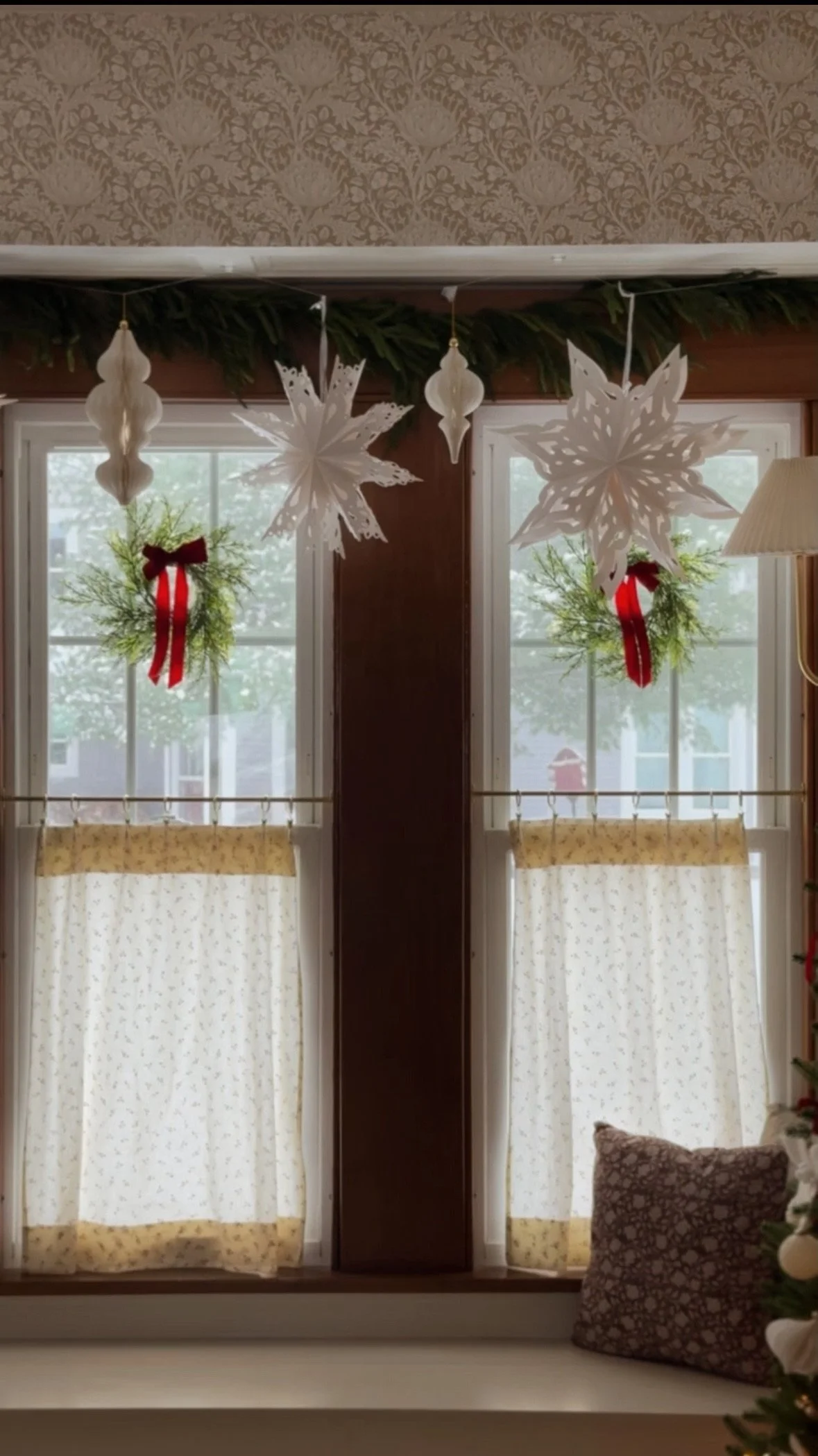Antique Inspired: Our DIY Upholstered Headboard
Lately, I’ve been leaning into those in-between projects—the ones that aren’t full-on renovations, but still offer that sense of progress and renewal. Our bedroom was feeling a little stale, so I decided to refresh it a bit with a little paint and some new fabric for our headboard!
This simple DIY reupholstery project made a huge difference, and I shared the journey in an Instagram reel on April 8th. But here, I wanted to give you a more detailed look in case you're feeling inspired to do the same in your own home.
Why Reupholster Instead of Replace?
We originally bought this headboard years ago, and while the shape and structure still work beautifully, the fabric just didn’t match where my style has evolved. I’m in a more “quiet home” season right now—gravitating toward warm, worn textures, soft neutrals, and natural finishes.
Rather than spend money on something new, I wanted to breathe new life into what we already had. Reupholstering gave me the freedom to choose exactly the fabric I wanted, while keeping a piece that already fits the scale and style of our space.
Materials I Used
Here’s a quick rundown of what I used for the project:
Staple gun (a must!)
1.5 yards of fabric (depending on your headboard size)
Fabric Scissors (for dividing your fabric)
Measuring tape and a little patience
Step-by-Step: My Process
Step 1: Choose Your Fabric (aka Tablecloth!)
We used a patterned tablecloth instead of traditional upholstery fabric—it’s affordable, wide enough, and often comes in beautiful designs. Make sure it’s thick enough to hold up to some pulling and stapling. We used two tablecloths in the size 60x102 to complete this project but if you have a bigger headboard you have the option to buy a larger tablecloth.
Step 2: Cover Headboard With One Tablecloth
We used one tablecloth (completely uncut) to cover the headboard.
Step 3: Cut Fabric to Size For Bottom Frame
Lay your tablecloth flat and cut it into panels slightly larger than each section of the bedframe (you’ll want extra to wrap around the edges and staple).
Step 4: Wrap & Staple
Pull the fabric taut over each section, wrap it like a present, and use a staple gun to secure it to the back or underside of the frame. Take your time on corners—fold neatly for a tailored look.
Step 5: Reattach Any Parts
Once everything is upholstered, reassemble your bedframe and admire your handiwork!
A Few Tips From My Experience
Choose fabric with a bit of weight. Thicker fabrics like linen blends or canvas work beautifully and are easier to pull smooth.
Take your time with the corners. This is the trickiest part, but a few well-placed pleats can make all the difference.
Trust your eye. Step back often and adjust as needed—this project is more forgiving than you think!
Making it last! Scotchgard the fabric for extra durability.
Final Thoughts: Small Changes, Big Impact
This headboard project reminded me how even the smallest shifts can have the biggest impact. I didn’t buy anything new besides the fabric, but the whole room feels softer, cozier, and more intentional now especially with the styling final touches.
If you’ve got a piece in your home that’s feeling tired, don’t be afraid to give it a second life. You don’t need to be an expert upholsterer to create something beautiful—just a few tools, a little time, and a whole lot of love.
You can watch the full transformation in my April 8th reel on Instagram @KindredHomestead, and I’d love to see your before-and-afters if you decide to try it yourself!
Here’s to making home feel like home, one project at a time. 🤍
—Tessa








Discover the latest Kindred Homestead weekly recap featuring curated home décor, timeless furniture, cozy lifestyle pieces, and trending style finds. Shop reader favorites and handpicked treasures to inspire your home and wardrobe this week.